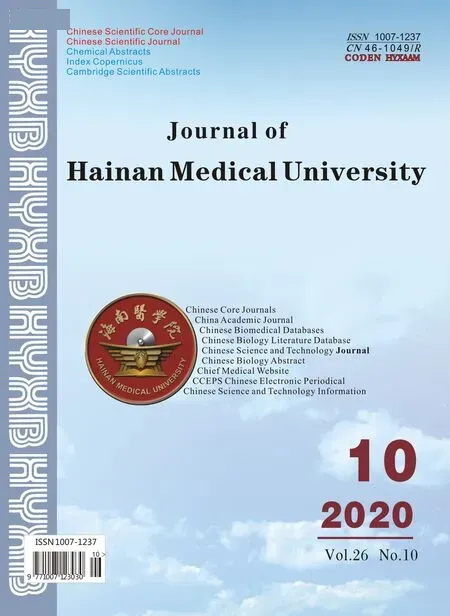Study on the Potential Mechanism of Drug Pair "Honeysuckle-Astragalus" on COVID-19 based on Network Pharmacology
2020-07-23JiLinFanTingTingZhuShiLiangZhang
Ji-Lin Fan, Ting-Ting Zhu, Shi-Liang Zhang
1. Shandong University of Traditional Chinese Medicine,Jinan, Shandong 250355, Chin
2. Department of Neurosurgery, Affiliated Hospital of Binzhou Medical College, Binzhou, Shandong 256603, China
3. Department of Cardiology, Affiliated Hospital of Shandong University of Traditional Chinese Medicine, Jinan, Shandong 250011, China
Keywords:
ABSTRACT
1. Introduction
Since December 2019, Wuhan has seen a number of pneumonia patients with unknown causes, and there is a certain epidemic trend. On January 12, 2020, the World Health Organization officially named novel coronavirus, which caused the pneumonia epidemic in Wuhan, as "2019-novel coronavirus" (2019-Novel Coronavirus, 2019-nCoV). With the development of the epidemic, such cases have also been found in other regions of China and overseas. Currently, there is no specific drug for 2019-nCoV[1]. The "Diagnosis and Treatment Plan for Pneumonia Infected in novel coronavirus (Trial Version 5)" issued by state administration of traditional chinese medicine of the National Health and Health Council considers this disease to be a "epidemic disease" of traditional Chinese medicine. Because the disease feels the qi of epidemic and crime, all localities can treat it based on syndrome differentiation and treatment according to the conditions of the disease, local climate characteristics and different constitutions, so as to better play the role of traditional Chinese medicine [1]. According to traditional Chinese medicine, any kind of evil attacks the human body, and healthy qi must fight against it. The lack of healthy qi and the lack of solid defense will easily lead to the invasion of evil including 2019-nCoV. As there is no specific medicine for treating the disease at present, the body's healthy qi is mainly relied on to resist external evil, so "invigorating qi and detoxifying" is of great practical significance for treating 2019-nCoV [2]. Jin Qi et al [3] summarized the prevention and control plans of the Shandong, Guangdong, Hebei and Zhong Nanshan teams, and it can be seen that honeysuckle and astragalus are compatible for the prevention and control of novel coronavirus. Wang Deng et al. [4] concluded and analyzed that there are 79 Chinese medicines in 56 preventive prescriptions for 2019-nCoV in 17 regions. Among them, the qi-tonifying medicine Astragalus membranaceus and the heatclearing and detoxifying medicine Honeysuckle have the highest frequency of administration, 31 times and 30 times respectively, which indicates that Astragalus membranaceus and Honeysuckle are widely used in clinical prevention and treatment of 2019-nCoV. Astragalus membranaceus is a commonly used qi tonic, which has the effects of invigorating qi, invigorating spleen, raising yang, lifting depression, benefiting health and consolidating exterior. Active ingredients in Astragalus membranaceus can regulate the secretion of mucous membrane in respiratory system, digestive system and genitourinary system, thus affecting the body's first immune defense line. It can also have a wide range of regulatory effects on immune organs, T lymphocytes, B lymphocytes and a variety of cytokines, promote the immune response of the body to pathogens invading the human body, and produce antiviral effects [5]. Apart from using "qi-tonifying drugs" in the medication schemes in various regions, heat-clearing and antidote drugs are also widely used. Honeysuckle is a commonly used heat-clearing and antidote drug, which has the effects of clearing heat and detoxifying and dispelling wind heat. Studies have shown that the active ingredients in Flos Lonicerae not only have antipyretic, anti-inflammatory and extensive antibacterial effects, but also have anti-influenza virus and anti-respiratory syncytial virus effects[6]. Astragalus membranaceus combined with honeysuckle can invigorate qi, detoxify and eliminate pathogenic factors, and is warm but not dry, which can help the growth of qi and blood but not heat. Honeysuckle and Astragalus membranaceus can clear away heat and toxic materials, benefit qi and nourish yin, and are cold in nature but not cold in nature [7]. Therefore, the mechanism of anti-2019-nCoV of Flos Lonicerae-Radix Astragali is studied by network pharmacology, which provides theoretical support for the application of two traditional Chinese medicines in the treatment of 2019-nCoV.Network pharmacology is to analyze the mechanism of treating diseases with traditional Chinese medicine through multi-component, multi-level and multitarget based on systematic pharmacology at the molecular level [8], which is consistent with the overall concept of traditional Chinese medicine. Based on the molecular level, the mechanism of anti-2019-nCoV of "Yiqi-Jiedu" drug on Astragalus membranaceus-Honeysuckle is discussed by using network pharmacology method, which provides new ideas and theoretical basis for honeysuckle-Astragalus membranaceus treatment of 2019-nCoV.
2. Methods
2.1 Information Collection of Honeysuckle-Huangqi Traditional Chinese Medicine
By retrieving TCMSP (traditional chinese medicine systems pharmacy database and analysis platform), TCMSP) platform and BATMAN-TCM (http://bionet.ncpsb.org/batman-TCM/) platform for pharmacological component analysis of traditional Chinese medicine system obtain data of all active components of Flos lonicerae-radix astragali, and effective active components are screened according to the conditions of oral bioavailability (OB)≥30% and druglike property DL≥0.18. At the same time, relevant documents are consulted in the CNKI database, the main active ingredients of the candidate traditional Chinese medicines and the ingredients reported to have antiviral activity are collected and collated, integrated and confirmed with the active substances screened in the TCMSP database[9], and then the potential target points corresponding to the selected active ingredients are derived through the database, and then the derived target points are imported into the Unitprot database (https:/ /www.unitprot.org//) for gene standardization processing.
2.2 Acquisition of 2019-NCOV Disease Targets
In OMIM (http://www.omim.org/) database and Gene Cards (https://www.genecards.org/) database, the disease name "2019-nCoV" was searched to obtain relevant targets for treatment of 2019-nCoV at present.
2.3 Honeysuckle-Astragalus membranaceus-Active Ingredients-Disease Target Network Diagram
The effective components and targets of the drug obtained in 1.1 are combined with the targets of the disease in 1.2 to obtain the target for treating 2019-nCoV with the effective components of honeysuckleastragalus. Upload the obtained target data to the Cytoscape 3.6.1 software to build a "drug-component-disease-target" network diagram. Among them, nodes represent honeysuckle-astragalus root and its effective components, diseases, targets, etc. The edge represents the relationship between honeysuckle-astragalus root and its components, components and diseases, diseases and targets.
2.4 Construction of Drug-Disease Core PPI Network
Data of intersection targets obtained under item 1.3 are input into STRING database (http:/http: //string-db.org), species is defined as "human", and PPI network of honeysuckle-astragalus treatment 2019-nCoV core is constructed. The STRING database file is imported into the Cytoscape 3.7.2 software, and its plug-in "Network Analyze" is used to analyze the network topology parameters, and the core targets are screened out based on the criterion that the Degree value is greater than the average value [10].
2.5 Functional Enrichment and Biopathway Analysis
Importing the PPI network core targets screened out in 1.4 into David (https://david.ncifcrf.gov/) database, selecting "Office _ Gene _ Symbol" and "Gene List", and selecting the species as "Homo sapiens",After that, "GOTERM_BP_DIRECT" under "gene ontology" and "KEGG_PATHWAY" under "pathways" are selected to carry out the analysis of kegg (kyoto genomics of genes and genomes) pathway and enrichment analysis of GO(Gene Ontology) biological process. Using P≤0.05 as the screening criteria, the first 20 eligible biological processes and KEGG pathways were screened out and displayed in tabular form.
3. Results
3.1 Screening of Active Components from Honeysuckle and Astragalus membranaceus
Through TCMSP database and BATMAN-TCM platform, the effective components of Flos Lonicerae-Radix Astragali were retrieved, and integrated with the effective components and antiviral active components retrieved in the literature to remove duplicate values. According to the screening criteria, 43 active components were finally obtained, including 23 Flos Lonicerae and 20 Radix Astragali, with the effective components including quercetin, luteolin, Stigmasterol, Jaranol, hederagenin, etc. See Table 1 for details.
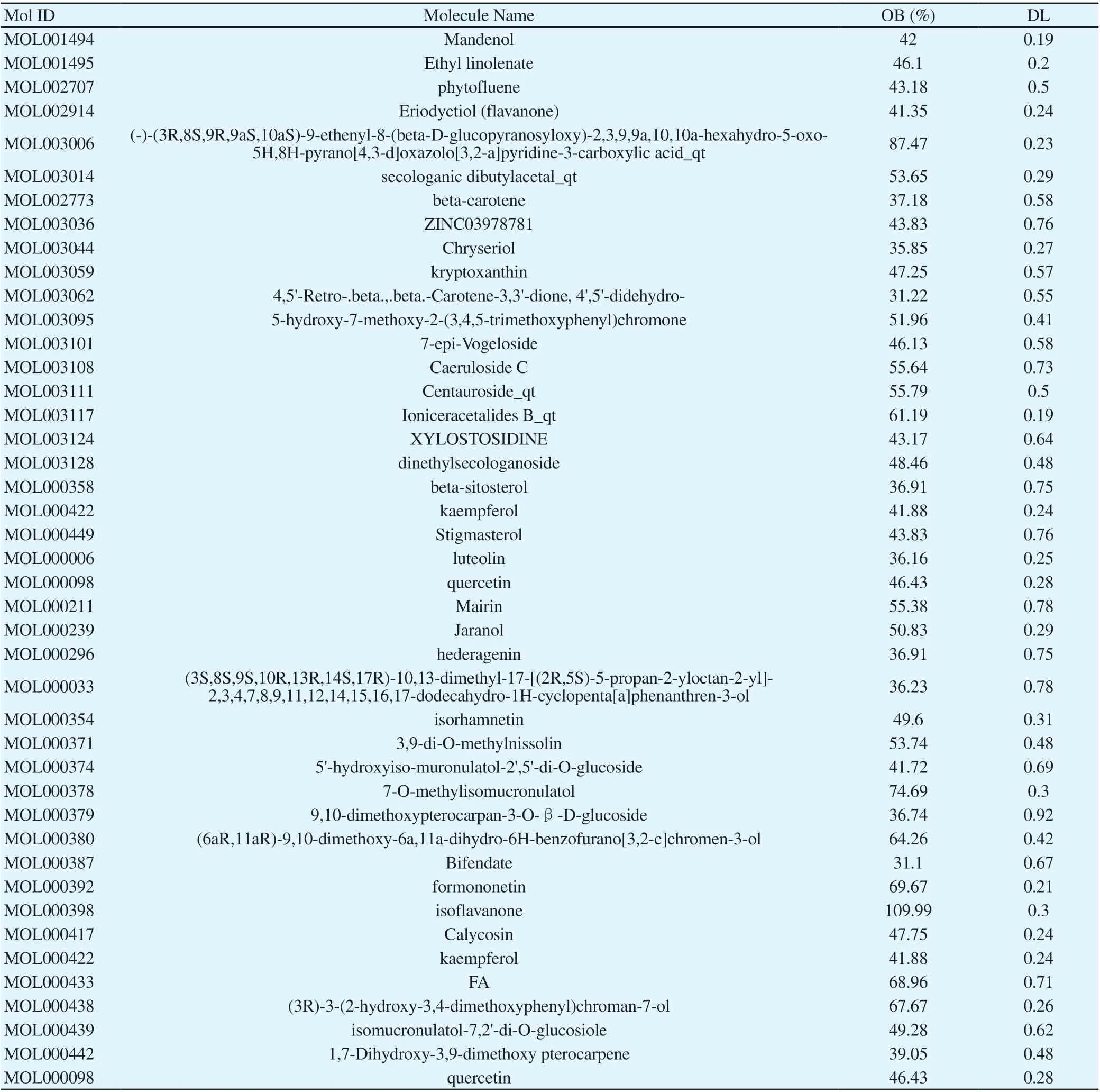
Table 1 Effective Components of Honeysuckle and Astragalus membranaceus
3.2 Honeysuckle-Astragalus root treatment 2019-nCoV potential target
After deleting the repeated values of the collected honeysuckleastragalus target points, 111 target points of the effective components of the two drugs and 227 target points of 2019-nCoV diseases are obtained, and Venn diagrams of drugs and diseases are obtained by combining the drugs and disease target points. As can be seen from Fig.1, there are 10 intersection targets of drugs and diseases, i.e. potential targets of honeysuckle-astragalus root treatment 2019-nCoV.
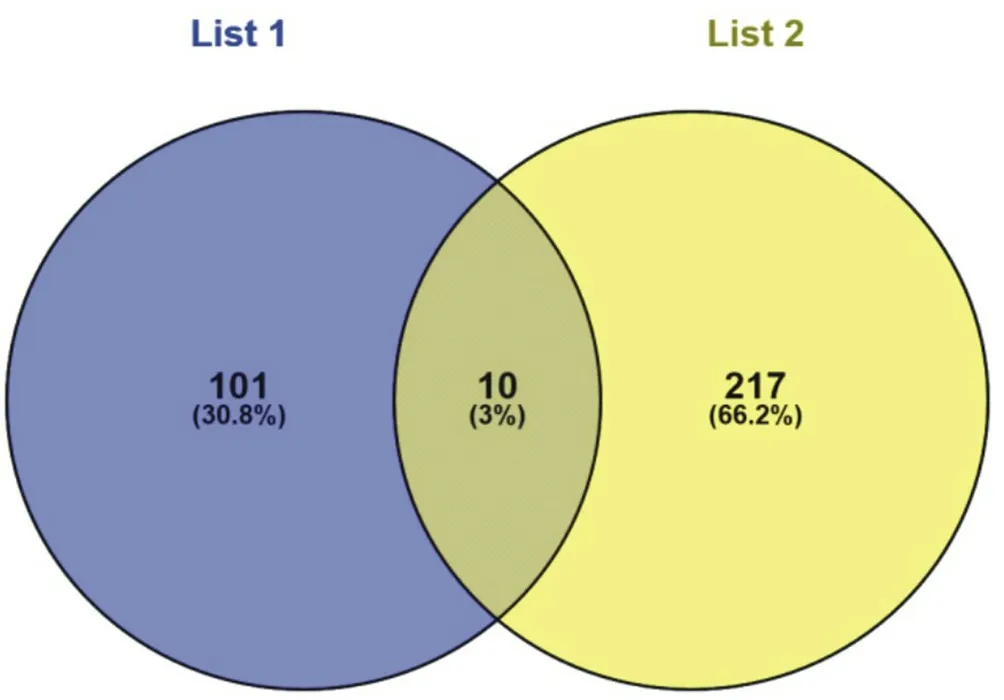
Figure 1 Venn, Target of Drugs and Diseases
3.3 Drug-Component-Disease Target Network Diagram
The "drug-component-disease-target" network of honeysuckleastragalus root treatment 2019-nCoV is shown in Fig.2. in the figure, "rectangle" represents honeysuckle-astragalus root, the "v" represents disease 2019-nCoV, the "rhombus" represents effective components and disease targets (expressed by genes), and the "circle" represents effective components. There are a total of 36 nodes in the figure, including honeysuckle, astragalus, 2019-nCoV 1 each, honeysuckle-astragalus active ingredients 23, honeysuckleastragalus treatment 2019-nCoV potential targets 10. The degrees of freedom of quercetin, kaempferol, luteolin and hederatine nodes are 20, 5, 3 and 3 respectively, which indicates that these components are closely related to diseases.
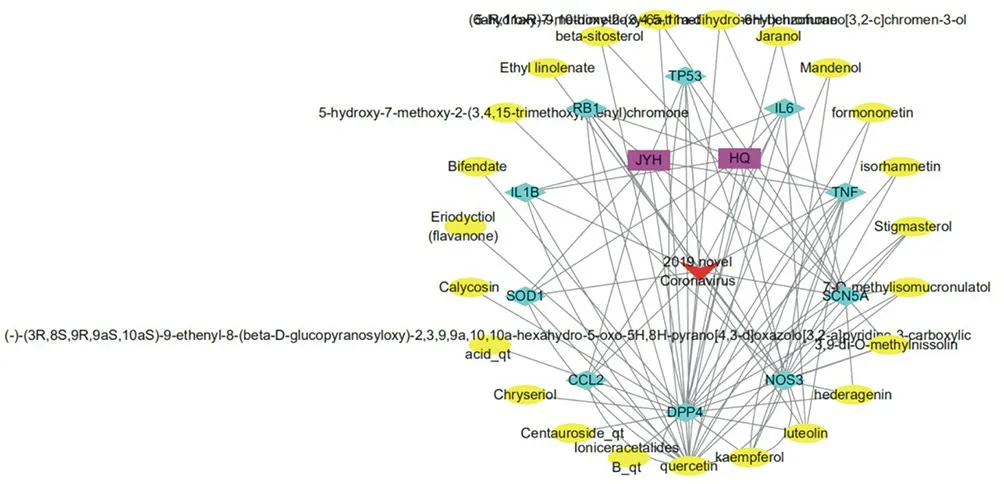
Figure2 Target network diagram of honeysuckle-astragalus root treatment 2019-nCoV "drug-component-disease"
3.4 PPI Network Diagram of Drug-Core Target of Disease
The drug honeysuckle-astragalus root and the targets of the disease 2019-nCoV are combined and intersected to obtain 10 targets for drug treatment of the disease, wherein the 10 intersected targets are NOS3 (nitric oxide synthase), DPP4(T cell surface antigen), SCN5A (sodium channel protein 5 subunit alpha), TNF (tumor necrosis factor), IL6 (interleukin 6), TP53 (cell tumor antigen p53), RB1 (retinoblastoma related protein), CCL2(C-C motif chemokine 2), IL1B (interleukin 1B), SOD1 (superoxide dismutase). The 10 targets were imported into STRING database, and the species was defined as "human". The drug-disease PPI network diagram was obtained. The diagram has 10 nodes, 26 edges, and an average node degree of 5.2. Nodes represent target proteins, while edges represent the relationship between proteins. The results are then exported in TSV format and imported into Cytoscape3.7.2 software. The Degree value is greater than 5 as the standard for screening, and finally 9 core targets are obtained, as shown in Figure 4. The "diamond" represents targets with higher node values, including NOS3, IL6, CCL2, TNF, TP53, etc. The results suggest that the above 9 targets are the core targets of Yinjinhuang-Huangqi in the treatment of the disease, which may play an important role in the treatment of 2019-nCoV.
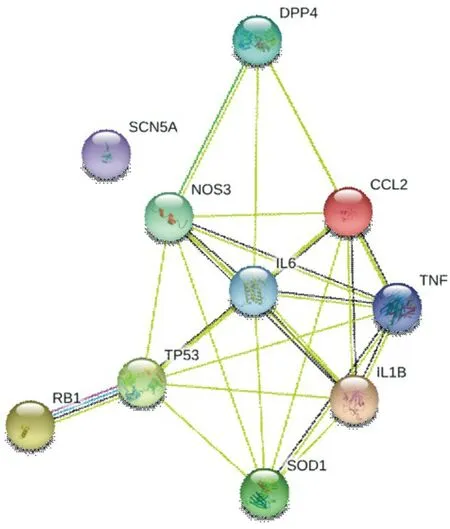
Figure 3 Drug-disease PPI network diagram
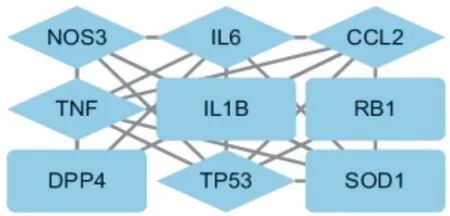
Figure4 Drug-disease core target network diagram
3.5 GO Biological Process Results Analysis
The core targets obtained from item 2.4 are entered into David (https://david.ncifcrf.gov/) database and GO biological process analysis is carried out to obtain 97 items of molecular function, biological process and cell composition, then screening is carried out according to P≤0.05, sorting is carried out in descending order, and the first 20 GO items are displayed in tabular form (see Table 3). It mainly includes response to antibiotic, lipopolysaccharide mediated signaling pathway, negative regulation of cell proliferation, Positive regulation of transcription of DNA template (DNA-template), protein kinase B signaling and other biological processes.
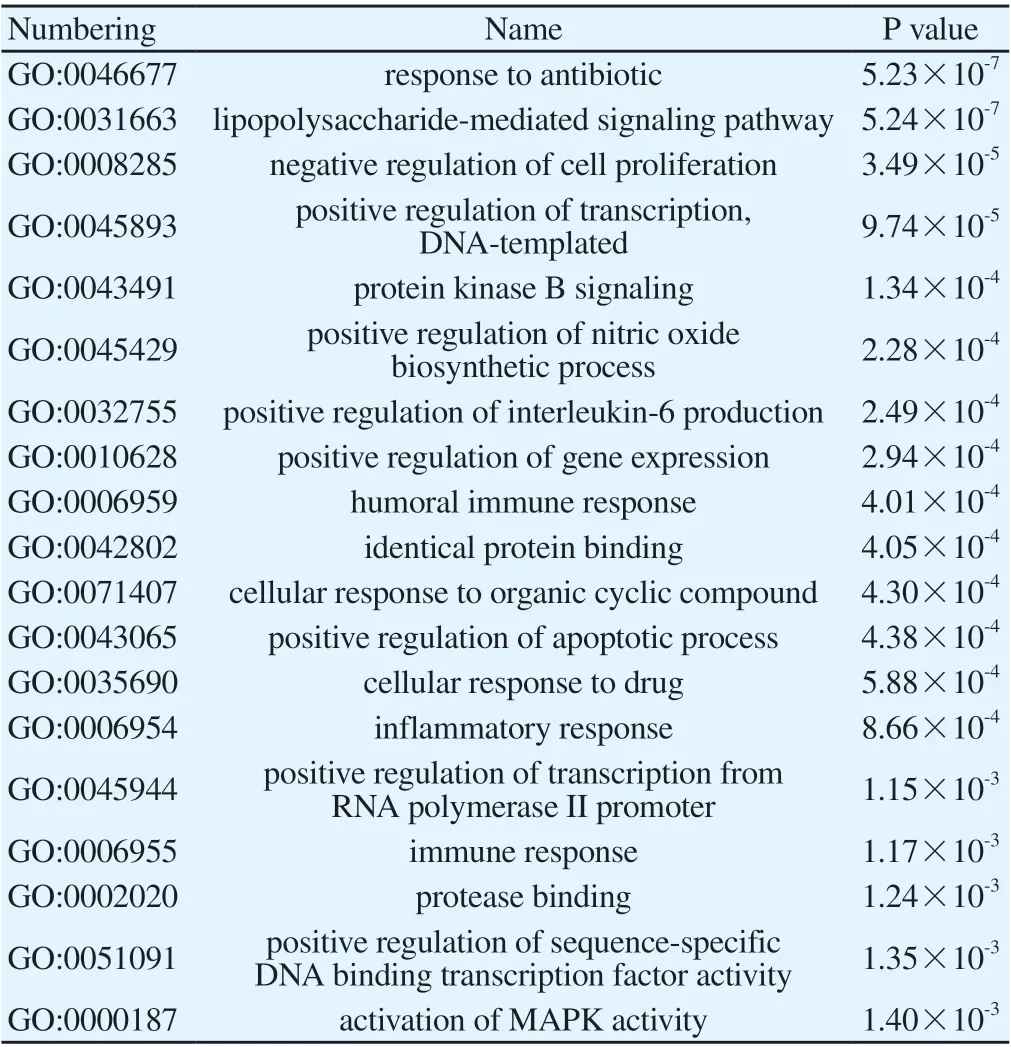
Table 3 Biological Process Analysis of 2019-nCoV Treated by Honeysuckle and Astragalus
3.6 Enrichment analysis of kegg pathway
The core targets obtained from item 2.4 are entered into David (https://david.ncifcrf.gov/) database to obtain 39 KEGG channels, with P≤0.05 as the screening criterion, and the first 20 signal channels are selected (see Table 4). These include Malaria, NOD-
LIKE RECEPTOR SIGNALING PATHWAY, Herpes simplex infection, Rheumatoid arthritis, Toll-like receptor signaling pathway (Toll-like receptor signaling pathway), TNF signaling pathway (tumor necrosis factor signaling pathway) and other signaling pathways indicate that honeysuckle-astragalus may participate in the treatment of 2019-nCoV through the above pathways.
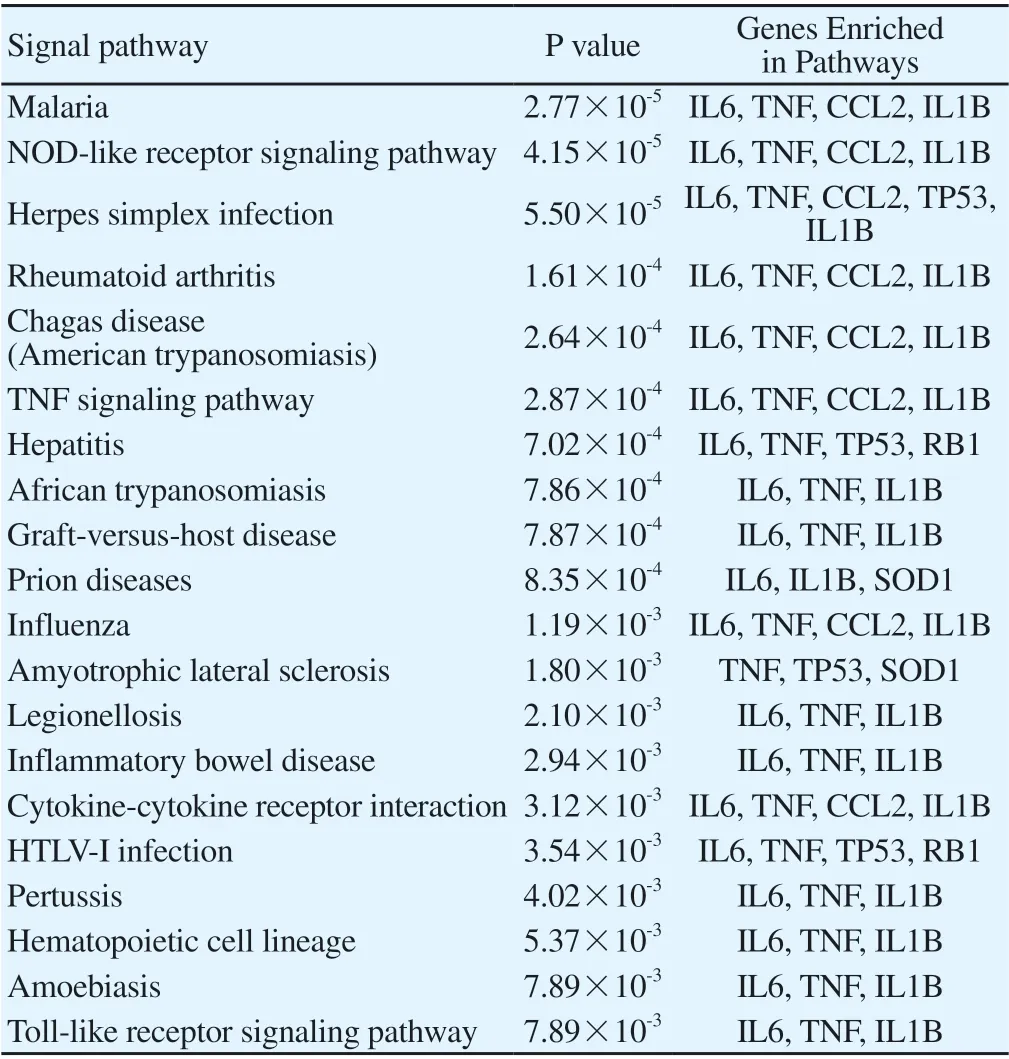
Table 4 KEGG enrichment analysis table
4. Discussion
Novel coronavirus is a modern medical disease name, which does not exist in Chinese medicine. It should be classified into the category of "epidemic disease" in traditional Chinese medicine. It is mostly affected by the pathogenic factors of epidemic diseases, and is characterized by rapid onset, rapid transmission, dangerous condition, strong infectivity and epidemic [11]. Chao Yuan Fang of the Sui Dynasty said in his book "Governors of Qi Diseases when Various Sources of Diseases Wait for Theory" that "those who are ill at the time should be warm and anti-cold in spring, hot and anti-cold in summer, cool and anti-hot in autumn, and have qi at other times. In the first year of life, there is no long-term or short-term illness, and the rate is similar. This is the trend of the times. " The occurrence of novel coronavirus this time may be related to the feeling of epidemic and pestilence of "having its own qi at different times". Zhang Zhongjing recorded in Treatise on Febrile Diseases: "There are many clans in Yu. Since the Jian 'an era, there have been no more than ten clans, and two thirds of them have died." It can be seen that the disease is more dangerous. Fan Fuyuan et al. [12] According to more than 50 confirmed cases of novel coronavirus in Hunan Province, pointed out that in the treatment according to the characteristics of epidemic virus, attention should be paid to protecting healthy qi to enhance the body's immunity, which embodies the idea of "healthy qi exists in the body, evil cannot be done". Other scholars [13,14] pointed out the development trend of the disease from the aspects of five transports and six qi, and also emphasized the application of clearing away heat and toxic materials, invigorating spleen and releasing liver in the disease.
In this paper, the mechanism of anti-2019-nCoV of "Yiqi-Qingrejiedu" drug on Flos Lonicerae-Radix Astragali was systematically analyzed by network pharmacology. Firstly, the effective components and target information in Flos Lonicerae-Radix Astragali are obtained by querying the database, and the acquired target information and disease target information are intersected to construct a "drug-component-disease" target network diagram, thus identifying disease pathways and basic biological pathways of important target intervention, and further revealing the TCM dialectical medication basis and multi-component, multi-target and multi-pathway action mechanism of Flos Lonicerae-Radix Astragali on 2019-nCoV [15].
According to TCMSP database analysis, the active components of Flos Lonicerae-Radix Astragali mainly include quercetin, luteolin, stigmasterol, galol, hederatine, etc. These active components may be related to the treatment of 2019-nCoV. Infection with 2019-nCoV will cause a large number of inflammatory factors to be activated, so it is particularly necessary to inhibit the activation of inflammatory factors. Xu Yinfeng et al[16] found that quercetin has a certain down-regulation effect on LPS-stimulated microglial inflammatory factors. Its anti-inflammatory mechanism may be related to down-regulation of the production of NO, TNF-α and IL-1β, and it can also block the activity of 3CLpro protease of Middle East Respiratory Syndrome coronavirus[17]. Research by Cheng Jian et al.[18] shows that quercetin can inhibit the expression of related genes and proteins, block activation of MAPK signaling pathway, prevent release of inflammatory factors, and ultimately reduce tissue damage and inflammation. Xu Qiuhong et al.[19] Studies have found that luteolin has anti-inflammatory, antiviral, anti-tumor and other effects, can effectively improve airway inflammation, and can also resist H1N1 influenza virus by inhibiting the activities of hemagglutinin (HA) and neuraminidase (NA) [20]. Therefore, many active ingredients in honeysuckle and astragalus have definite antiinflammatory and antiviral effects, suggesting that honeysuckle and astragalus have potential therapeutic effects on 2019-nCoV.
The active components of honeysuckle-astragalus root for 2019-nCoV treatment correspond to multiple targets. through the "drugdisease" core target network diagram, NOS3, DPP4, TNF, IL6, TP53, RB1, CCL2, IL1B, SOD1, etc. can be found to be the key targets for drug treatment of diseases. Jiao Jing et al [21] found that when acute lung injury and inflammation occur, the expression of NOS3 in alveolar epithelial cells and vascular epithelial cells will increase to relax bronchi and capillaries, thus reducing pulmonary edema. 2019-nCoV is similar to other pneumonia, which will lead to a large amount of activation of inflammatory factors such as TNF, IL6, IL1B, etc., resulting in excessive immune response of the body, thus leading to lung injury [22]. Studies by Jasmine Huang et al.[23] have found that inflammatory factors such as TNF and IL1B participate in the reaction process of COPD inflammation, and can cause a large number of T lymphocytes and neutrophils to accumulate in mucosa, leading to airway inflammation, thus causing damage to the structure and function of small airway and alveolar tissue. These results suggest that inhibiting the over-activation of inflammatory factors may be a new idea for the treatment of 2019-nCoV.
GO biological processes include the response to antibiotics, lipopolysaccharide mediated signal pathway, negative regulation of cell proliferation, humoral immune response, inflammatory response, etc. It mainly involves a series of biological processes such as inflammatory response, immune system, signal transduction, etc. It shows that these biological processes play a key role in honeysuckleastragalus treatment 2019-nCoV. Through the analysis of KEGG pathway, the active components and targets of Flos Lonicerae-Radix Astragali may act on 2019-nCoV through tumor necrosis factor signaling pathway, MAPK signaling pathway, NOD-like receptor signaling pathway, malaria, influenza A, herpes simplex, pertussis, tuberculosis and other pathways. NOD-like receptor signaling pathway participates in physiological processes of various diseases, such as viral infection, tumor, acute kidney injury, inflammatory kidney disease, etc. It can promote secretion of inflammatory factors and participate in immune response by activating MAPK signaling pathway. Therefore, inhibiting activation of its signaling pathway can effectively slow down release of inflammatory factors, thus alleviating lung injury [24]. Toll-like receptor (TLRs)-mediated signaling pathway is an important regulatory mechanism of viral response [25]. At present, 10 kinds (Tlr1 ~ Tlr10)[26]have been found in human body, among which TLR4, TLR7, TLR8 and other receptors can induce the activation of relevant inflammatory factors, leading to the occurrence of excessive inflammatory response and severe pneumonia, and play a significant role in antivirus and inducing lung immune injury [27]. IL6, TNF, CCL2, IL1B are related to TNF signaling pathway. TNF is an important cytokine. its elevation will increase the infiltration of inflammatory cells into the airway, thus leading to airway hyperresponsiveness, inducing and aggravating asthma [28]. inhibiting the activation of its pathway can correspondingly alleviate asthma symptoms of patients. Most of the above signal pathways are related to virus infection and lung injury, suggesting that honeysuckle-astragalus may treat 2019-nCoV through antiviral infection and repair of lung injury [15].
To sum up, this paper systematically analyzes the effective components, targets and pathways in honeysuckle-astragalus by network pharmacology, reveals the potential mechanism of honeysuckle-astragalus in treating 2019-nCoV, and illustrates that honeysuckle-astragalus acts on 2019-nCoV through multiple components, multiple targets and multiple pathways. However, it still has certain limitations and needs further experimental verification.
杂志排行
Journal of Hainan Medical College的其它文章
- Network pharmacological study of Qingfei Paidu Decoction intervening on cytokine storm mechanism of COVID-19
- Observation on clinical application effect of ankle rehabilitation robot
- Meta-analysis of the relationship between post-stroke depression and the risk of mortality
- Meta-analysis of clinical efficacy of combined traditional Chinese and western medicine in the treatment of granulomatous mastitis
- The effect of plasma uric acid on oxidative stress in ankylosing spondylitis by Keap1-Nrf2 signaling pathway
- LINC01614 expression in gastric cancer and its prognostic value based on bioinformatics analyses
